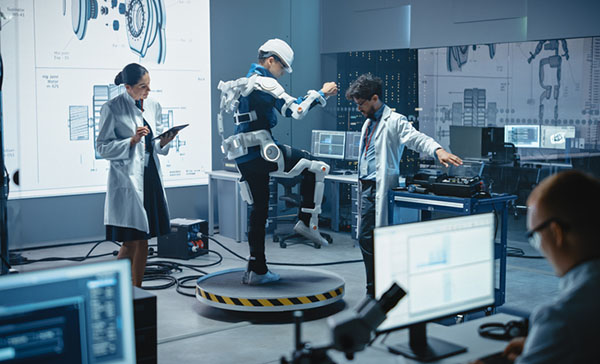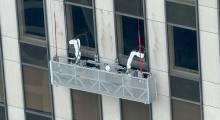It's no surprise that innovations in robotics and artificial intelligence are changing the workplace. For years, manufacturers have relied on automation, and industry observers have buzzed about the implications of robots replacing human workers.
More recently, the “Great Resignation” included millions of workers retiring early or seeking different types of jobs. Manufacturers and supply chain operators have recognized the need for automation, as well as the need to fully use the human talent they are able to employ and retain.
In fact, the Great Resignation was driven by things including anxiety related to the ongoing COVID-19 pandemic, mounting employee frustrations, and limited options for flexible work. In 2021 alone, more than 47 million Americans voluntarily quit their jobs, according to the Harvard Business Review. Many of them have yet to return to full-time employment—if they ever do.
With such a large exodus, many enterprises are turning to robots and AI. Some have touted automation as the only way to solve the workforce shortage. However, it didn't take long for companies such as Amazon and Tesla to realize that “lights-out” facilities are not necessarily as good as those with the right people.
That’s why some design innovation experts are now saying that, in order for real progress to take place, businesses and societies must embrace strategies that allow robots and humans to collaborate to build a more sustainable workplace for the future.
While human and AI-driven robots have been working together for a while now, today's AI capabilities weren't even on the radar in the earliest days of computing. The sweet spot of optimal productivity from machines and humans came only after years of design work, understanding processes, and user experiences.
Don't fear the robots
“We should not be sizing up the potential of humans or machines in isolation but taking both combined,” noted Jens Martin Skibsted and Christian Bason, co-authors of Expand: Stretching The Future by Design. “We must instead investigate solutions whereby humans and machines complement each other, maximizing the potential of both.”
Some estimates predict that 30% of jobs will be replaced by robots and AI. Manufacturing roles could be the most vulnerable to robots and machine learning, according to TechJury. Globally, 375 million jobs are at risk of being lost; in the U.S., this number is between 14 to 80 million, said the blog post.
Even as the global population approaches an estimated 8.5 billion by 2030, the world will have to adjust to the changing nature of work. At the same time, the increase in automation in the U.S. has coincided with historically low unemployment rates, which also exacerbate labor shortages.
The extent to which people and robots can work together will determine how this plays out in reality. New technologies will change tasks and processes such as piece picking, palletizing, and welding, but the amount of human-machine interaction for each should be the result of deliberate choice.
For instance, in goods-to-person (G2P) applications, the robots move materials, while employees do the picking, guided by intuitive user interfaces.
As robotics and AI grow more capable, executives, operators, and floor associates must decide whether to fear innovation or work with them as tools to solve problems.
“Instead of letting technology run its course as if we have no say and the future was predetermined, we must actively create the future we want. It is not given,” wrote Skibsted and Bason. “We can and need to expand how we think about the future – and design new jobs with intent. Why not collaborate with machines?”
The sum of humans and AI is greater than its parts
The factories, warehouses, retailers, and restaurants of the future depend not only on increased productivity and quality, but also on finding the best combinations of people and machines. AI has a role to play here as well.
“Most activities at the human-machine interface require people to do new and different things and to do things differently,” noted a 2018 Harvard Business Review survey of 1,000 companies working with AI.
Consider how much computing has transformed the workplace in the past few decades. With many robotics and AI applications in the early stages of development, it would be foolish to think that these tech advances don't have the same transformational potential.
There is no doubt that enterprises are facing many economic challenges. While automation seems to be an obvious solution to worker shortages, employers shouldn't neglect the need for human-machine collaboration, retraining, and good process engineering,
The sweet spot— where humans and machines harmonize – will be where much of the future's work is completed profitably.

About the author
Jens Martin Skibsted is an entrepreneur, author, and global partner at VP Foresight & Mobility. He is also a council member of the World Economic Forum's Future of Cities and Urbanization team.
Skibsted has designed numerous eco-transportation concepts and is a thought leader in innovation and design. His designs have informed digital transformations for governments across the world, as well as product development teams, academia, business solutions, and public service providers.
In addition, Skibsted was listed in the European Centre's 2014 “40under40” and has been featured in HuffPost and Fast Company.
Article topics
Email Sign Up
















